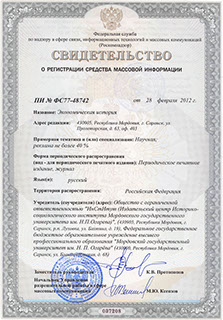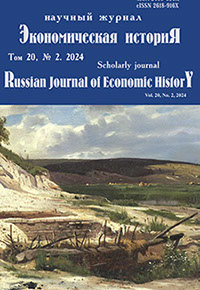Экономическая историЯ
Russian Journal of Economic History
ISSN 2409-630X (Print)
ISSN 2618-916X (Online)
Expert board:
- Scientific Council of RAS on economic history;
- Research and Educational Center «The economic history of Central Russia and the Middle Volga region» of Ogarev Mordovia State University;
- Center of Economic History of Lomonosov Moscow State University
Navigation
Certificate of registration

ISSN 2409-630X (Print), ISSN 2618-916X (Online)
DOI: 10.15507/2409-630X.065.020.202402.180-193
УДК 94+332.132
Dmitriy V. Buyarov
Blagoveshchensk State Pedagogical University (Blagoveshchensk, Russia)
e-mail: buyarov_d@mail.ru
Xinjiang Production and Construction Corps: Phenomenon of Socio-Economic and Political Institution of Chinese Society
Abstract
Introduction. The Xinjiang Uygur Autonomous Region is strategically important for the People’s Republic of China, due to its geographical location, economic role and ethno-religious situation. One of the key tools for controlling the troubled province is the Xinjiang Production and Construction Corps. The XPCC, which is often called in the PRC – Bintuan (“Corps”), occupies a central place in many ways both in the economy of the XUAR and in the system of managing the autonomous region and maintaining security in it.
Materials and Methods. Chinese, foreign and domestic researchers have applied to the study of the topic over the years: Bao Yajun, K. L. Syroezhkin, V. G. Gelbras, etc. The source base of this article is, first of all, statistical materials presented on the official websites of the Government of the Xinjiang Uygur Autonomous Region and the Xinjiang Production and Construction Corps. The author used an analysis method to solve the scientific problem, which made it possible, by referring to various aspects of the activities of the XPCC, to consider it as an integrated social institution. The work reveals the economic, social and political spheres of activity of the XUAR.
Results. The Xinjiang Production and Construction Corps was established in 1954. Today, the XPCC is a hybrid entity (a complex socio-economic and military-political institution), which, despite a set of problems, continues to develop. By its status, the corps is a ministerial-level institution under the State Council of the People’s Republic of China. It has administrative authority over cities, towns and farms within its borders within the framework of the XPCC. Nominally subordinate to the Government of the XUAR, the corps is essentially an independent entity. XPCC is a large economic organization engaged in agricultural, industrial production, construction, trade, and service provision. The population of the XPCC exceeds 3.6 million people, which is almost 14 % of the total population of the autonomous region. The Xinjiang Production and Construction Corps strives to be a self-sufficient and universal system and includes a significant number of educational, scientific, cultural and health institutions.
Discussion and Conclusion. The Xinjiang Production and Construction Corps is a unique social institution, representing a combination of a large-scale manufacturing corporation, a social and military-political organization. Despite the fact that the number of XPCC continues to increase, it is not a fully sustainable organization. The corps faces both internal and external risks in modern conditions, the corps is the conductor of the PRC’s policy in the Xinjiang Uygur Autonomous Region.
Keywords: XUAR, Xinjiang Production and Construction Corps, division, regiment, Han Chinese, ethnic minorities.
For citation: Buyarov D. V. Xinjiang Production and Construction Corps: Phenomenon of Socio-Economic and Political Institution of Chinese Society. Ekonomicheskaya istoriya = Russian Journal of Economic History. 2024; 20(2): 180–193. (In Russ.). DOI: 10.15507/2409-630X.065.020.202402.180-193.
© Ogarev Mordovia State University. History and Sociology Institute, 2017
68, Of. 411, Bolshevistskaya St., 430005, The editorial office of the scholarly journal «Russian Journal of Economic History»
Tel.: (8342) 24-25-90; 27-07-11, Fax: (8342) 24-25-90, E-mail: jurnal-econom-hist@isi.mrsu.ru
Designed by A. Napalkov, Email: napalkov@isi.mrsu.ru

